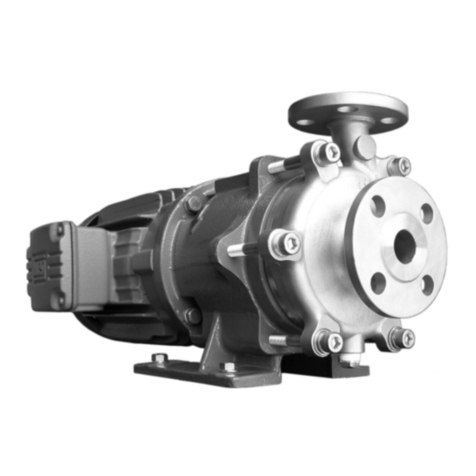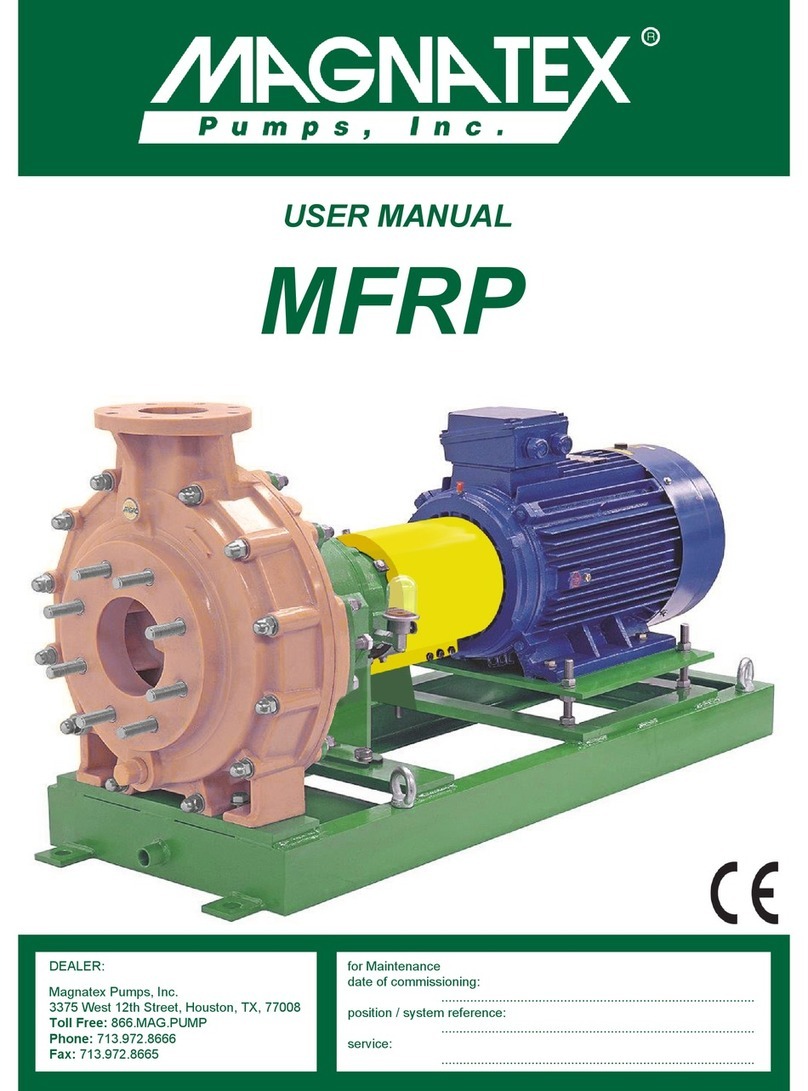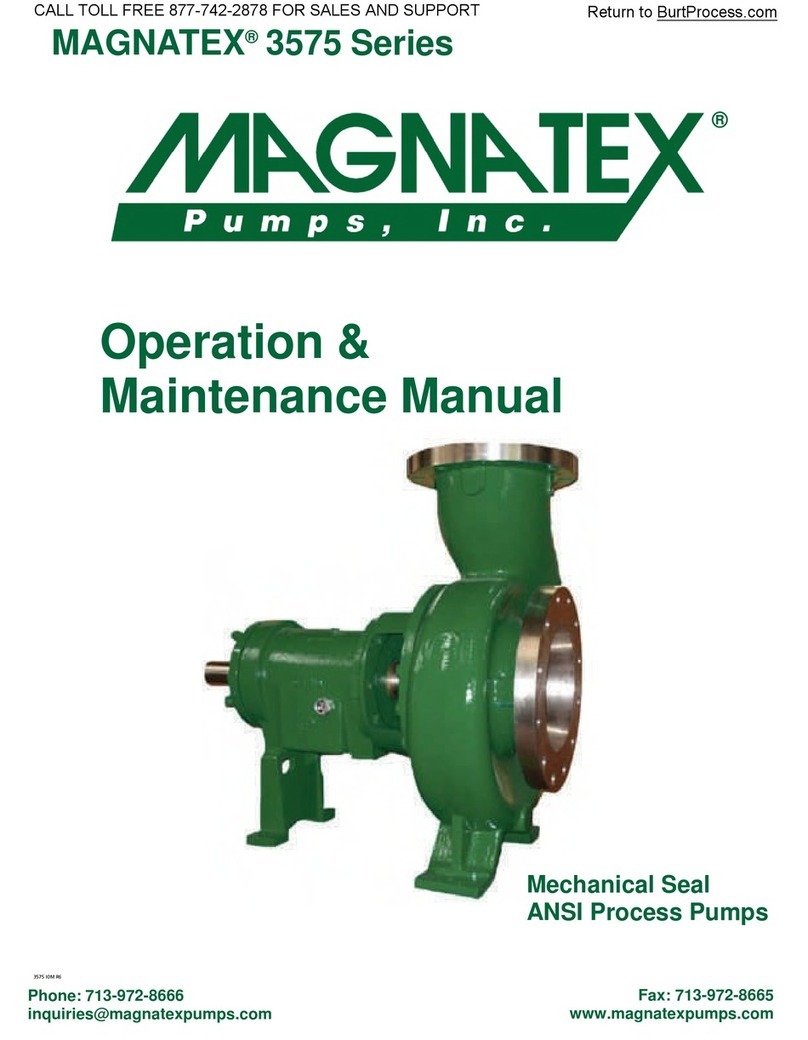
MPL/MHL IOM-R2 Copyright 2020 Magnatex Pumps, Inc. 6
discharge side of the pump as close as possible to the discharge nozzle between the
pump and discharge valve.
F. Prior to starting the pump, it is important to flush the piping to insure the system is
free of foreign matter and particles such as pipe scale, welding beads and dirt from
system fabrication. Large particles can block the bearing lubrication ports in the
pump causing serious damage. In addition, metallic particles can magnetically attach
to the inner magnet also resulting in damage. If possible, a temporary startup
strainer with a 40x40 US mesh screen should be installed in the pump’s suction line.
BE VERY CAREFUL not to allow the temporary strainer to be plugged to the point of
starving the pump of liquid, resulting in cavitation and the possibility of running the
pump dry. Since running the pump dry can destroy the pump’s bearings, it is
recommended to install a compound pressure gauge between the strainer and pump
suction to monitor partial plugging of the strainer. The discharge pressure should
also be closely monitored. Any drop in discharge pressure without discharge valve
throttling could indicate partial strainer plugging (assuming constant demand to the
system).
G. Magnatex pumps, although very rugged, are not designed to handle excessive pipe
stress. The resulting forces and moments on the pump can result in misalignment
and possible damage to the pump. Piping must be anchored as close to, but
independent from the pump. Pump and pipe flanges must be positioned together
with gaskets (supplied by others) before attempting to tighten flange bolts. See
Nozzle Loading Criteria, drawing ED-4160 on Page 14.
H. The pump MUST NOT RUN DRY. To assure that adequate liquid is available to the
pump suction, a flow sensor and /or power monitor should be installed to shut the
pump down in the event of dry run. MAGNATEX provides an optional electronic
power monitor offered at time of pump quotation to prevent dry run operation when
properly installed and set according to the normal operating parameters of the pump.
ROTATION CHECK, AND START-UP
Removal of air from the pump system is critical for proper system and component
performance. Trapped air/vapor voids in the system piping can cause reduced discharge
pressure readings and “choked” system flow. Safely vent all air/vapor from the system
following best operational procedures.
Before the pump is placed in service check the direction of motor shaft rotation as noted
below. Rotation should match the cast-in arrow or label and the direction of the casing scroll
terminating under the discharge flange.
ROTATION
A. Open the suction and discharge valves and allow the pump to be filled with liquid.
Vent piping at system vent points.
!WARNING! NEVER RUN THE PUMP DRY
B. Remove the motor fan guard for visual inspection of motor shaft rotation.






























